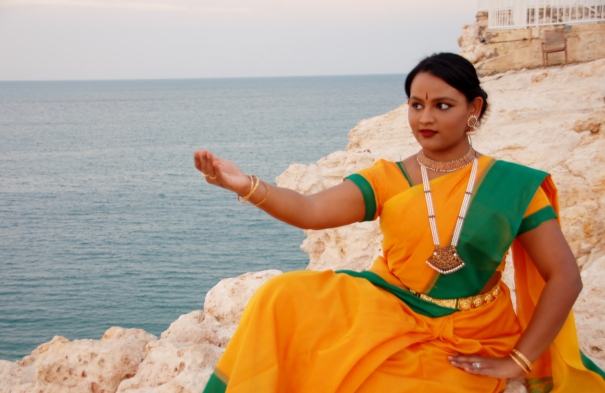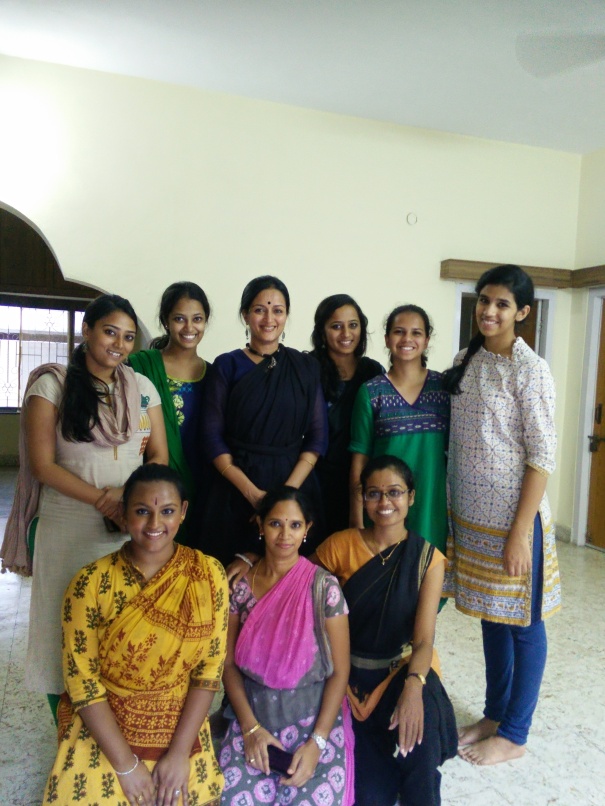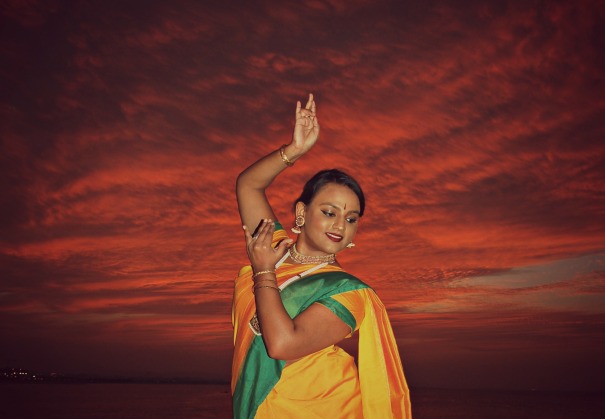This week we have a guest post on the blog by Badrinarayan Murali a Journalism graduate from Ryerson University. These are his thoughts on a recent program I was a part of hosted by Gaanavarshini School of Music in Mississauga, Ontario. Hope you enjoy this departure from the norm!
Sandhya Srivatsan created school of music called Gaanavarshini in 2006 as a way to impart her knowledge of Carnatic music, a South Indian form of classical singing, to young Mississaugans. On May 8, she and her students celebrated the school’s ten-year anniversary at the Maja Prentice Theatre by presenting “Sangeeta Kala Utsav”, a three hour program of the songs and dances of South Indian culture and Indian film music.
Srivatsan, the show’s artistic director, gave brief explanations in between pieces to help the audience make connections between different art forms and their respective impacts on many Indian films’ musical scores. Some of the featured instruments of the show’s orchestra included the violin, the veena (a long stringed instrument), the mridangam (a double sided drum) and cymbals.
Srivatsan and her students presented traditional pieces from the Carnatic Music composition repertoire. Shradha Ganesh, an emerging artist in the Indian film music scene who attends the regional arts program at Cawthra Park Secondary School presented Bollywood film music that has been inspired by Carnatic Music. Another featured performer of the night was Srivatsan’s daughter, Sridaya. She performed six Bharatanatyam pieces, one of the traditional South Indian classical dance forms. Bharatanatyam as a dance form is used to tell stories from Hinduism; Sridaya chose her pieces for this performance based on the importance of the accompanying music. Sridaya’s pieces were choreographed by her dance teacher, Anuradha Jagannathan, who was also a member of the show’s orchestra.
The audience consisted of many people who were both familiar with South Indian culture and those who were not. One of the sponsors of the event, Kala Narayanan from Eurojets was pleased with the turn out at Sangeeta Kala Utsav. “I was spell bound by the performances. I am sure a lot of sincere coaching and patience was required to bring the students to that level of singing,” says Narayanan. “Equally note worthy was Sridaya’s dance performance with absolute confidence and poise.
For Sandhya Srivatsan, this was a night of celebration and education.
“This event was an artistic journey highlighting the symbiosis of Carnatic music with dance and other art forms,” said Srivatsan. “It was appreciated by all demographics in the audience which made this a gratifying experience.”
Follow Gaanavarshini on Facebook and Instagram @Gaanavarshini!
Follow Badri Murali on Twitter @BadriMurali














